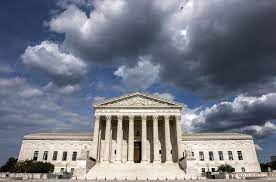By Bertha Lewis
•
September 15, 2021
During the past few months, many people (myself included) have spoken out about the ongoing attempts by Republican-led state legislatures to implement new laws that will make it difficult for citizens – especially minority citizens – to be able to vote in future elections (Between January 1, 2021 and July 14, 2021, 18 states enacted 30 such laws). Among other things, these voter suppression laws include provisions that: - Shorten the period of time to request a mail-in ballot; - Shorten the deadline for delivering mail-in ballots; - Require annual renewal of requests for mail-in ballots; - Eliminate the distribution of mail-in ballots to voters who have not specifically requested one; - Limit the availability, location and/or number of drop boxes for mail-in ballots; - Impose more rigid ID requirements for mail-in ballots and/or in-person voting; - Ban drive-thru voting; - Expand the purging of voter rolls; - Eliminate Election Day registration; - Limit early voting days or hours; and, - In Georgia, allow the state legislature to dismantle local election boards that it deems to be “unfit” – and to replace them with its own appointees. As horrendous as these various efforts to suppress voting have been, they have at least been part of the normal legislative process – which means that they have been out in the open and capable of being tracked and documented. But even as we continue the battle to prevent states from implementing these restrictive laws and we advocate for Congressional Democrats to pass the For The People Act of 2021and the John L. Lewis Voting Rights Amendment Act , another form of voter suppression is taking place mostly behind closed doors – and out of sight: the creation of redistricting plans that will effectively discourage minority voters from participating in future elections. What Is Redistricting? Redistricting is the drawing of boundaries for the districts from which citizens elect their various political representatives. In New York State, this currently includes twenty-seven (27) Congressional Districts as well as sixty-three (63) State Senate Districts, and one-hundred-fifty (150) Assembly Districts. States currently redraw their various political districts once every 10 years. This occurs in the year following the completion of the national census (Example: In 2021, states will re-draw their various voting districts based on the results of the 2020 census). How the 2020 Census Will Affect New York State As a result results of the 2020 Census, New York State will lose one (1) Congressional seat starting with the 2022 elections – and the 118 th Congress, which will convene in January 2023. This loss would not have occurred if New York State had included an additional eighty-nine (89) residents in its 2020 Census count – and all the other states had remained stagnant in terms of their resident counts (Had that happened, New York State would have retained its twenty-seven seats and Minnesota would have lost one of its eight seats). The 2020 Census was originally extended from its usual end date of July 31 st to October 31 st because of the COVID-19 pandemic. But at the directive of then-President Trump, the 2020 Census count was halted as of September 30 th despite several requests from the Census Bureau to have additional time to process forms and turn in numbers ( The U.S. Supreme Court upheld the decision to end the 2020 Census as of September 30, 2020 ). The other states that lost a congressional seat as a result of the 2020 Census results are as follows: · California; · Illinois; · Michigan; · Ohio; · Pennsylvania; and · West Virginia. And the states that gained congressional seats as a result of the 2020 Census results are as follows: · Colorado; · Florida; · Montana; · North Carolina; · Oregon; and · Texas (2 seats). After considering its various legal options, New York State chose not to challenge the results of the 2020 Census – and the concomitant loss of one of its Congressional seats. Census experts and legal scholars had both opined that there was little chance of such an appeal succeeding because any change to the Census count in New York State would have to be replicated in every other state. Challenging Redistricting Plans For almost 200 years, court challenges to redistricting plans were generally denied because they were deemed to involve political issues rather than legal issues. But in 1962, the U.S. Supreme Court issued the landmark ruling of Baker v. Carr – which held that constitutional challenges to redistricting plans did, in fact, involve legal issues and could, therefore, be adjudicated by courts. Since the Baker v. Carr ruling, a series of cases has significantly altered how Congressional Districts are drawn. Among other things, these cases have established the following: · Redistricting plans must embody the concept of “one person, one vote”; · Each Congressional District must, to the greatest extent possible, contain the same number of residents; · All Congressional Districts must comply with Section 2 of the Voting Rights Act – which means that a redistricting plan cannot result in the suppression of voters based on their color, race, or primary language. Independent Redistricting Commissions and Gerrymandering More recently, the U.S. Supreme Court held in Arizona State Legislature v. Arizona Independent Redistricting Commission that states can establish, via ballot initiatives, independent commissions to take over responsibility for redistricting from state legislatures. Independent redistricting commissions offer perhaps the best hope that we can put an end to gerrymandering – which basically allows the party in power to stay in power. Perhaps the easiest way to understand what gerrymandering can do is to study the visual portrayal that was developed several years ago by The Washington Post: In states that have experienced significant gerrymandering, election results are often skewed in favor of the party that controlled the state legislature when the new Congressional districts were drawn. Thus, for example, in the 2018 midterm Congressional elections in Ohio, the Republicans won the statewide vote by just 5%. Notwithstanding that result, Republicans won 12 of the state’s 16 Congressional seats in those elections because of how the state’s Congressional districts were gerrymandered to favor Republicans. Although twenty-one (21) states have now implemented some form of redistricting commission, there is a great deal of variation in terms of who sits on these commissions – and how much power they have in terms of actually drawing the boundaries for voting districts. In some states, these commissions set the boundaries for Congressional districts and state legislative districts. In others, the commissions only set boundaries for Congressional districts – or only for state legislative districts. In still others, these commissions merely make recommendations to the state legislature as to how voting districts should be structured. The composition of these commissions also varies a great deal. In some states such as Arkansas, the members are all elected state officials (i.e., the Governor, the Secretary of State, and the Attorney General). In others, the members of the commission are selected by the political leaders of the state legislature and the Governor. Many proponents believe that in order to be truly effective, redistricting commissions must be composed of independent citizens who are not active members of any political party. Others believe that these commissions should have an equal number of Democrats and Republicans but be chaired by someone who is not affiliated with either party. New York State’s Independent Redistricting Commission In 2014, voters in New York State approved Proposition 1 – which amended the state’s constitution and created the New York Independent Redistricting Commission (NYIRC). And in 2021, the NYIRC will for the first time oversee the redistricting process in New York State. The NYIRC has a total of ten (10) members. Of those ten, two (2) are appointed by the New York State Senate Majority Leader/Temporary President; two (2) are appointed by the New York State Senate Minority Leader; two (2) are appointed by the Speaker of the New York State Assembly; and two (2) are appointed by the New York State Assembly Minority Leader. The final two (2) members of the NYIRC are selected by the eight (8) appointed members. In this regard, these final two members cannot have been enrolled in the Democratic party or the Republican party for at least the last five (5) years – and the eight appointed members must consult with organizations that are devoted to protecting the rights of minority voters and other constituencies before making their selections. The initial members of the NYIRC are as follows: · David Imamura, Esq. – Chair · Jack M. Martins, Esq. – Vice Chair · Eugene Benger, Esq. · Ross Brady, Esq. · John Conway, Esq. · Dr. Ivelisse Cuevas-Molina · Dr. John Flateau · Elaine Frazier · Charles Nesbit · Willis H. Stephens, Jr., Esq. Although we will need to wait and see what sorts of results the NYIRC produces, I do have major concerns about the composition of the initial panel. To begin with, it is bothersome that the panel has eight (8) men and only two (2) women. Similarly, it is bothersome that minorities are so underrepresented on the panel. In a state in which women outnumber men by more than half a million, why do women only get 20% representation on the NYIRC? Similarly, in a state in which minorities make up almost 40% of the population and are continuing to grow as an overall percentage of the population, why are there only three (3) minorities on the NYIRC? But what bothers me the most about the composition of the NYIRC is that eight (8) of its ten (10) members were selected by the current political leaders in the New York State Senate and the New York State Assembly – and that the other two were selected by the first eight appointees. How can we possibly expect this body to be “independent” when we allow the current “Ins” to control the process that will affect our representation in Congress – and in our state legislature – for at least the next decade? I also find it bothersome that there was such a delay in getting the initial members of the NYIRC appointed – and in getting it to begin the arduous task of redrawing the boundaries for all the voting districts in New York State. In this regard, Proposition 1 contained detailed language that spelled out exactly when the NYIRC must complete each of its assigned tasks – and given the delay in its becoming operational, we are already seeing corners being cut and input being curtailed as it seeks to draft its plans for New York State’s Congressional districts – and its State Senate and Assembly districts – by the applicable deadline of January 15, 2022. Given the unnecessary delay in getting the NYIRC operational, there is little chance that it will be able to undertake any meaningful efforts at community outreach and/or civic engagement – especially with regard to minority communities. Nor will it likely do very much, if anything, to educate New York State residents about the redistricting process. If we are going to make redistricting a fair and open process in New York State, then we cannot allow the “Ins’ to control it. Instead, we need to establish requirements that will ensure that the composition of the NYIRC is consistent with the demographics of New York State – and then allow individual voters to directly select all its members. Unless we completely change the way in which we select the members of the NYIRC, we will only be a half-step away from the smoky backrooms that have overseen the redistricting process in New York State throughout its history. And, just as before, redistricting will remain a silent killer for democracy.





